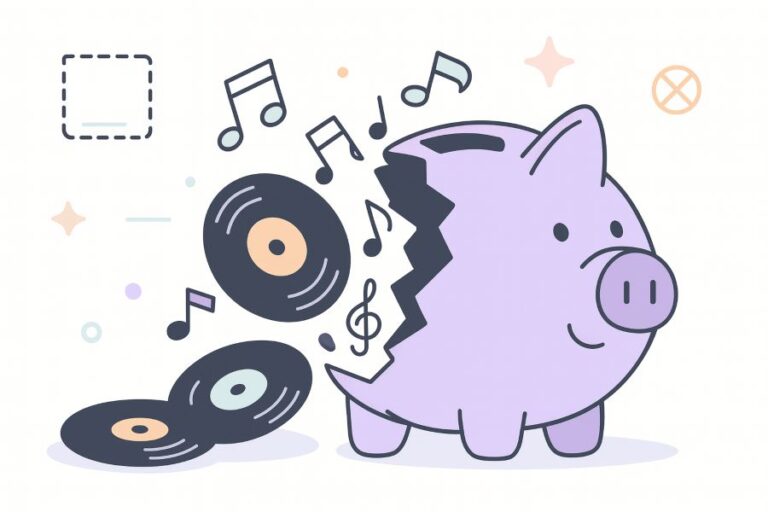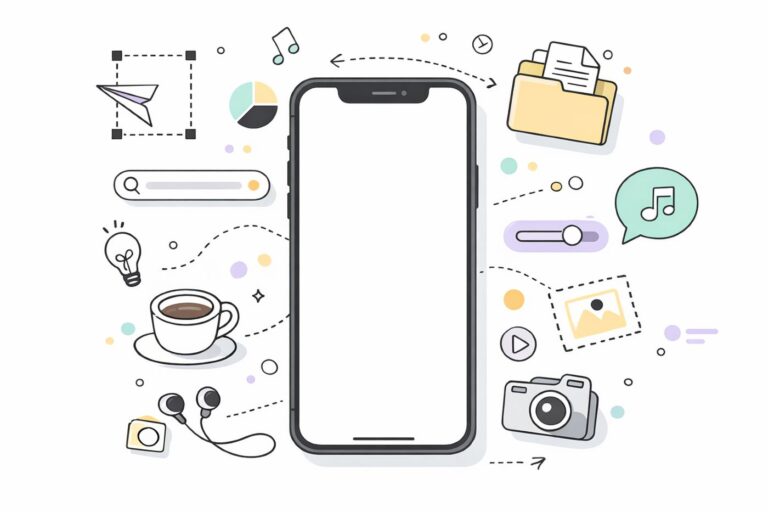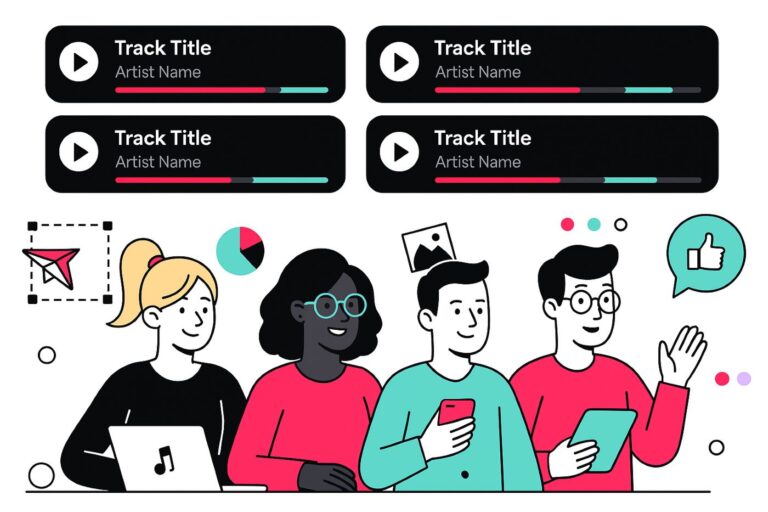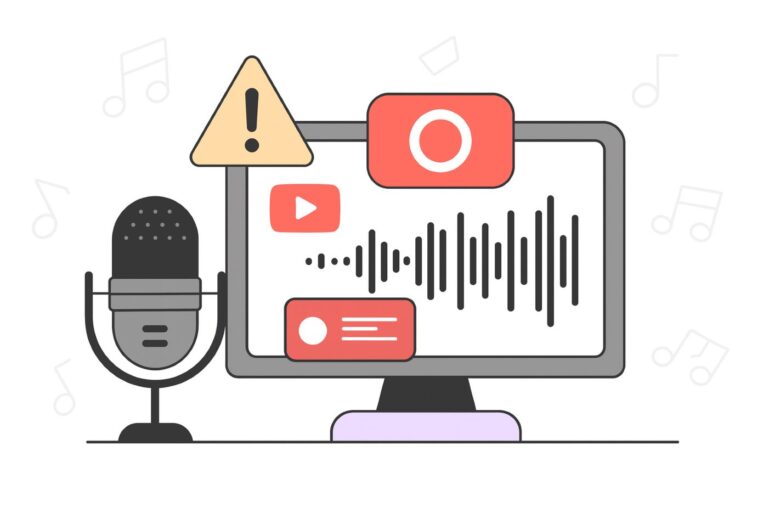Can I Reuse TikTok Music on Reels, Shorts, and YouTube?
Audiodrome is a royalty-free music platform designed specifically for content creators who need affordable, high-quality background music for videos, podcasts, social media, and commercial projects. Unlike subscription-only services, Audiodrome offers both free tracks and simple one-time licensing with full commercial rights, including DMCA-safe use on YouTube, Instagram, and TikTok. All music is original, professionally produced, and PRO-free, ensuring zero copyright claims. It’s ideal for YouTubers, freelancers, marketers, and anyone looking for budget-friendly audio that’s safe to monetize.
Cross-posting feels harmless until a muted Reel, a blocked Short, or a client email reminds you TikTok’s music never came with passport stamps. This guide shows exactly when TikTok sounds stop, where platform libraries apply, and which tracks actually survive YouTube, Reels, Shorts, and paid campaigns.
Why TikTok Sounds Are “TikTok-Only”
TikTok’s system gives you quick access to huge amounts of audio. Those tracks sit inside a closed licensing environment that does not follow your video when you leave the app.
How TikTok Licenses Music (In-App Sounds Overview)
TikTok’s sound library pulls in chart tracks, indie releases, user-created clips, memes, and stitched audio from millions of accounts. It looks casual inside the app, but behind it sit specific deals and permissions between TikTok and rights holders, not blanket rights for you to reuse.

TikTok licenses these sounds so you can attach them to videos on TikTok under its terms and tools in that single ecosystem. Those terms give TikTok defined rights, but they do not hand you a transferable license to lift that audio and export it elsewhere.
What the Commercial Music Library Actually Promises
The Commercial Music Library gives approved businesses and creators a curated set of tracks to soundtrack content on TikTok with fewer clearance headaches. TikTok For Business material frames CML as a safe internal library for campaigns that stay only inside TikTok’s products and advertising placements.
In the CML and Commercial Sounds terms, TikTok states that commercial uses outside TikTok are not permitted and that it grants no rights for those external uses. That language closes the door on treating CML tracks as a ready-made license for YouTube or Meta.

If you want the same track beyond TikTok, you need a separate agreement with the actual rights holder that securely covers all platforms and formats. Until you hold that document, treat every CML song as TikTok only and assume no off-platform rights exist there.
Can I Use TikTok Sounds on YouTube?
Most people assume YouTube will accept whatever music is played in their TikTok, but once your video leaves TikTok, you need your own rights story or you invite claims.
Reposting a TikTok with In-App Music to YouTube or YouTube Shorts
TikTok’s license for in-app sounds only covers use inside TikTok, so the moment you move that content to YouTube, you leave the controlled environment that allowed that track in the first place. You now rely on your own rights, not on TikTok’s agreements with labels and distributors.

If you repost a TikTok with in-app music directly to YouTube or Shorts without your own license to that song, YouTube can route revenue to the rightsholder or block the upload based on Content ID matches. In practic,e you should treat that soundtrack as unlicensed.
Using a TikTok Sound as the Track for a New YouTube Video
When you download or rip a TikTok sound and drop it under a new YouTube edit, you take audio that TikTok cleared for its own platform into a place those terms do not reach. If you lack direct sync and master rights, you treat that use as unlicensed.

Saying “but it is a TikTok sound” only proves the track appeared inside TikTok’s system, not that you gained rights for YouTube. The only proof that matters is a clear license or contract that names your channel, your client, your platforms, and your type of use.
Can I Use TikTok Sounds on Instagram Reels and Facebook/Meta?
Creators often move winning TikToks straight into Reels or Facebook and expect the music to come along safely, but Meta runs on different deals, different tools, and a different set of rules.
Cross-Posting TikToks with Music to Reels
TikTok’s music setup covers use inside TikTok, so it never turns into a universal pass that clears the same track inside Instagram’s or Facebook’s systems. When you upload that file to Reels, Meta looks at it as your responsibility, not TikTok’s covered content.

Reels offers its own licensed music library and its own way to attach tracks inside Meta’s environment, and that route keeps their side documented. If you upload a video that carries TikTok-licensed audio baked into the file instead of using Meta’s tools, you move onto very thin legal ice.
Cross-Posting to Shorts, Feeds, Stories, LinkedIn, etc.
The same logic follows you to every other destination, so any platform outside TikTok should start from the assumption that TikTok sounds and CML tracks do not come with valid reuse rights. Each site runs on its own agreements with labels, publishers, and libraries, not on TikTok’s internal permissions.

To stay safe when you publish across Shorts, feeds, Stories, LinkedIn, or any other channel, you either pick music through that platform’s own licensed tools or use tracks that carry a written multi-platform license in your name. Anything else leaves your content open to claims, restrictions, or painful rebuilds later.
What About TikTok’s Commercial Music Library Off-Platform?
Some guides treat CML like a shortcut for cross-platform campaigns, but TikTok’s own language keeps those tracks locked tightly inside its own walls.
The Missing Cross-Platform Language (And the Explicit Ban)
CML is TikTok’s curated, pre-cleared library for brands and creators who publish organic posts and ads inside TikTok. TikTok For Business materials present it as a solution for campaigns that stay within TikTok placements, not as a general license for anything you upload across channels.

The CML and Commercial Sounds terms state that commercial uses outside TikTok do not fall under TikTok’s grant and they give no rights for those extra placements. That warning closes the door on treating CML as a shortcut license for YouTube, Meta, or other channels.

If you want a CML track beyond TikTok, you need a direct agreement with the rights holder or library that covers each platform and each format. Until you hold that document in your files, treat every CML song as TikTok only and assume nothing travels.
Using CML in Multi-Channel Campaigns (Safely)
If you love how a CML track fits your TikTok, keep it only for TikTok edits and build that creative natively where the rules actually support you. For YouTube, Meta, OTT, and other channels, secure a real license or move to multi-platform safe music.
Safe Music for Personal Use
“Personal” feels harmless, but platforms still rely on real licensing, so you stay safe only when you work inside each app’s own tools or use music you genuinely control.
TikTok: For personal TikToks, use TikTok’s Sound Library or, if you qualify, its Commercial Music Library only inside TikTok. TikTok’s official guidance and CML terms license that music for use on TikTok, so using those tracks on other platforms is not allowed and you cannot treat them as portable rights.

Facebook: On Facebook, low-risk personal use starts with Meta’s built-in music options, including the Sound Collection and licensed music tools inside Reels and video creation. Meta marks these tracks as rights cleared for use on its platforms, while unlicensed uploads or randomly copied audio can trigger mutes or restrictions.

Instagram: For Instagram Stories and Reels, use the in-app music library only within Instagram or rely on music you own or license yourself. Instagram’s help materials tie that catalog to agreements for use on Instagram, so lifting those songs into TikTok, YouTube, or other platforms is not allowed and carries no export rights.

YouTube: YouTube’s Audio Library offers music and sound effects that YouTube labels as safe to use in videos, including many cases with monetization allowed. When you post even personal content, tracks from this library, or music you fully control, gives you a far stronger position than dropping in random chart songs and hoping Content ID ignores you. Don’t cross-post on other platforms.

Cross-sharing: If you share a “just for fun” clip across apps, treat each upload as its own licensing moment and lean on music that can travel with you. The safest path is to use your own compositions, tracks you licensed directly, or trusted third-party royalty-free catalogs that grant written rights for every platform you touch.
Safe Music for Monetized Content
The moment a video earns money or supports a sale, your soundtrack becomes a business asset that needs real, traceable rights on every platform, not just a good vibe and a trending sound.
TikTok: For monetized or brand-facing TikToks, TikTok directs you to its Commercial Music Library, which it describes as pre-cleared for commercial use on TikTok for eligible business and creator accounts. Using music outside CML for commercial content relies on rights you secure yourself.
Facebook: On Facebook, Meta’s Sound Collection offers royalty-free music and sound effects that Meta marks as rights-cleared for use and monetization in videos on its platforms. If you monetize with ads or sponsored content, Sound Collection and tracks you directly license give a defensible base.

Instagram: For monetized Reels and branded posts on Instagram, Meta points creators toward Sound Collection and other rights-cleared options that it positions as safe for use in eligible content on its surfaces.
YouTube: On YouTube, the Audio Library gives you music and effects that YouTube flags as copyright safe for monetized videos, while Creator Music adds tracks you can either license upfront or use on a revenue share basis. For any paid or partnership content, these routes or your own licenses align with YouTube’s rules and keep monetization stable.

Cross-sharing: If one monetized video runs across TikTok, Meta, and YouTube, treat the soundtrack as a shared contract that must hold up in every environment. The safest approach is to use your own music, tracks you license directly, or reputable third-party royalty-free catalogs that grant written multi-platform commercial rights.
Safe Music for Commercial Content
When you spend client money, run paid media, or push a brand narrative, your soundtrack must come from licenses that survive audits, platform checks, and legal review, not from whatever trend felt right in the moment.
TikTok: When you publish as a brand, agency, or paid partner, the soundtrack has to survive lawyers, platforms, and clients without excuses. Use music with written, multi-platform rights and treat TikTok in-app sounds and CML as TikTok only unless a separate contract clearly extends them.

Facebook: On Facebook, Meta Sound Collection provides royalty-free tracks and effects that Meta licenses for commercial and non-commercial use on its own platforms. The Sound Collection terms explicitly grant an on-platform license, which makes it the reliable choice for ads and branded content.
Instagram: For Instagram Reels ads and branded posts, Meta again points to Sound Collection as the safe source for commercial use on Meta surfaces. Using Sound Collection audio or properly licensed tracks you control aligns with Meta’s own guidance, while relying on mainstream music from the standard library for ads remains legally restricted.
YouTube: On YouTube, the Audio Library offers tracks that YouTube marks as free to use in commercial content. Those tracks carry Creative Commons Attribution licenses that allow commercial use if you credit correctly. Also, you can use those tracks outside YouTube as long as you credit the author as explicitly displayed inside the CC license.

Cross-sharing: When one campaign runs across TikTok, Meta, and YouTube, treat the music as a single licensed asset that must hold up everywhere. The dependable path is to use music you own, tracks you license directly with clear multi-platform rights, or trusted third-party royalty-free catalogs that spell out commercial coverage in writing.






Real Questions Creators Ask About Cross-Platform Music
Creators keep asking the same thing in different ways: “Can I safely reuse this platform music somewhere else, or not?”
“Is this message because I use TikTok music in my Facebook videos?”

TikTok’s music tools cover use on TikTok, while Facebook expects either Meta Sound Collection or properly licensed tracks. A TikTok export with in-app music on Facebook sits outside both systems and can trigger flags or warnings.
“Can I post copyrighted music for unmonetized content if a client pays me to make it?”

If a client pays for the content or it promotes a business, the use counts as commercial even if the account itself is not monetized. So you need real licenses and cannot rely on platform libraries or trends.
“Can I use YouTube’s Audio Library music on TikTok or Instagram?”

Some YouTube Audio Library tracks, especially CC BY ones, may allow wider use with correct attribution, but others only grant limited rights. So you must check each track’s license and never assume blanket cross-platform permission.
“Are TikTok and Instagram sounds safe for business use, or will I get in trouble?”

TikTok pushes businesses toward the Commercial Music Library and expects separate rights for other music. On the other hand, Meta limits how business accounts can use mainstream tracks and directs brands to Sound Collection or licensed music, so no serious commercial strategy should lean on random in-app sounds.
Planning Cross-Platform Campaigns Without Losing Your Soundtrack
If you plan your music around one platform at a time, you create legal gaps and expensive edits, so start with the full campaign map and then drop tracks into it with intention.
Start from “Everywhere” and Work Back
List every channel where this content should live, including TikTok, Reels, Shorts, long-form YouTube, podcasts, websites, email, in-store, connected TV, and paid ads across accounts. When you see that full picture, it becomes clear which tracks support growth instead of trapping you in one app.
Choose music that comes with a contract or license text that spells out your real-life use, including all named platforms, organic and paid placements, boosts, user-generated collaborations, and allowlisting or Spark ads. If the wording feels vague or stops at one platform, treat that track as a future problem, not a hero asset.
When You Must Use TikTok-Only Tracks
Sometimes a trending sound on TikTok delivers context, humor, or social proof you cannot fake, so keep that moment inside TikTok and build a version that lives comfortably within TikTok’s own rules. Treat that edit as a TikTok native asset that does not need to travel.
Alongside it, create parallel cuts that use multi-platform safe music for Reels, Shorts, YouTube, and ads, so every channel runs on a soundtrack you can defend in writing. This approach lets you participate in TikTok culture without turning your long-term campaign into a takedown risk.
Lock In The Right Setup For Safe Growth
Treat your music choices as infrastructure. When you pick tracks with clear rights for every platform and campaign, you can reuse edits without re-cutting the soundtrack. Your brand sits on proof instead of crossed fingers.

Audiodrome was created by professionals with deep roots in video marketing, product launches, and music production. After years of dealing with confusing licenses, inconsistent music quality, and copyright issues, we set out to build a platform that creators could actually trust.
Every piece of content we publish is based on real-world experience, industry insights, and a commitment to helping creators make smart, confident decisions about music licensing.














